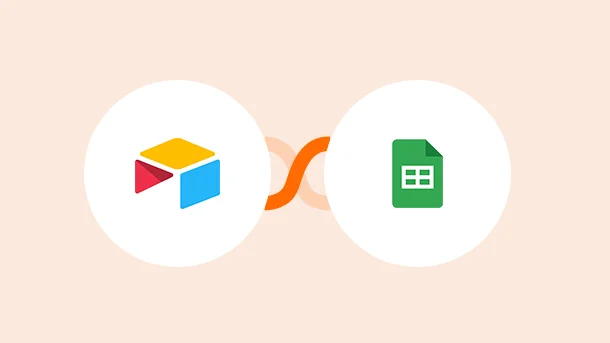
The main difference between Airtable and Google Sheets is how they manage databases. Efficiently managing databases in no-code projects are the key to success; whether your requirements are usual or complicated, a no-code database is necessary. Let’s start with a simple example. If you want to build a table of potential client’s contact information, follow-up dates, and purchase history you’ll need to use a no-code database. The bigger and more complicated your project gets, the more you need such a database.
Imagine having tens of thousands of real estate listings, all with prices, showing dates, seller notes, and legal issues. You need to organize all these files in a stable database. It must offer you both accessibility and availability besides all other data management features.
Nowadays, we have multiple no-code database vendors offering their services to online users. On one hand, we have the well-known Google Sheets, a Google tool offering high-end spreadsheets. On the other hand, we have Airtable, a strong competitor with different features and capabilities.
Does that mean one of them is better than the other? Generally, we can’t say one is better because both have significant features, but at the same time, each one of them seems to specialize in something better than the other. The bottom line is; you’ll have to choose the better based on your own criteria.
This article will introduce you to the basic features of each one of them. We’ll discuss things like the interaction with the surrounding environment, the technical complication behind them, and the pricing.

Integrate Airtable vs Google SheetsWith 750+ Apps In 1 Click
No Learning Curve. Built For Non-techies.
| Features | ||
|---|---|---|
| Concept | Web-based relational database | Web-based spreadsheet |
| Approach | Data management centralized approach | Database centralized approach |
| Usefulness | Can be used for simple and complex data sets | Not suitable for complex data sets like financial analysis tables |
| Layout | Besides tables, it offers Kanban, cards, and other layouts | Similar to Excel files. Abstract tables with rows and columns. |
| User experience | More complicated and requires getting familiar with new terminology, yet considered reasonable. | Designed so anyone using the internet can use it. Familiarity with Excel makes it even easier for all users. |
| Mobile app. | Is more functional than Google sheet’s mobile view | Small mobile phone screen limits its functionality |
| Interfaces | Relatively complicated | Easy to use |
| Collaboration | Allows multi-user collaboration and offers different levels of privileges | Allows multi-user collaboration with simple edit/view access privileges |
| Pricing | Free subscription with limited features and paid one with full functionalities | Free, fully functional, and comes with a Gmail account |
Google sheets have a user-friendly interface. It doesn’t look much different from Excel, and any Excel user can quickly relate to Google sheets. People feel familiar with it. There is no need to learn new terminology because the tools are similar to what any computer user has experienced before.
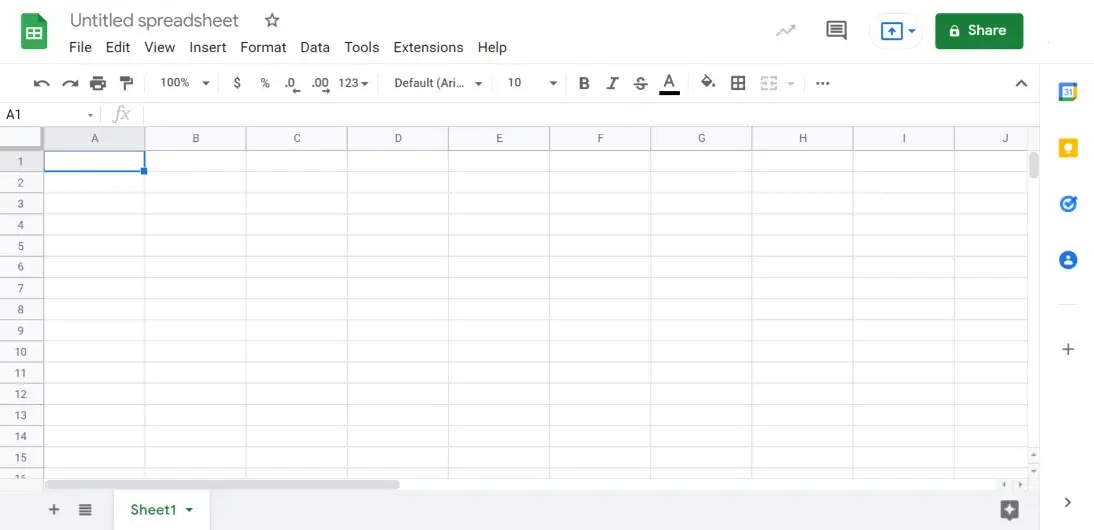
Airtable is relatively complicated. The ability to build no-code relational databases forces Airtable to have some complex interfaces. Moreover, using Airtable requires learning a whole new terminology, like workspaces, blocks, and bases.
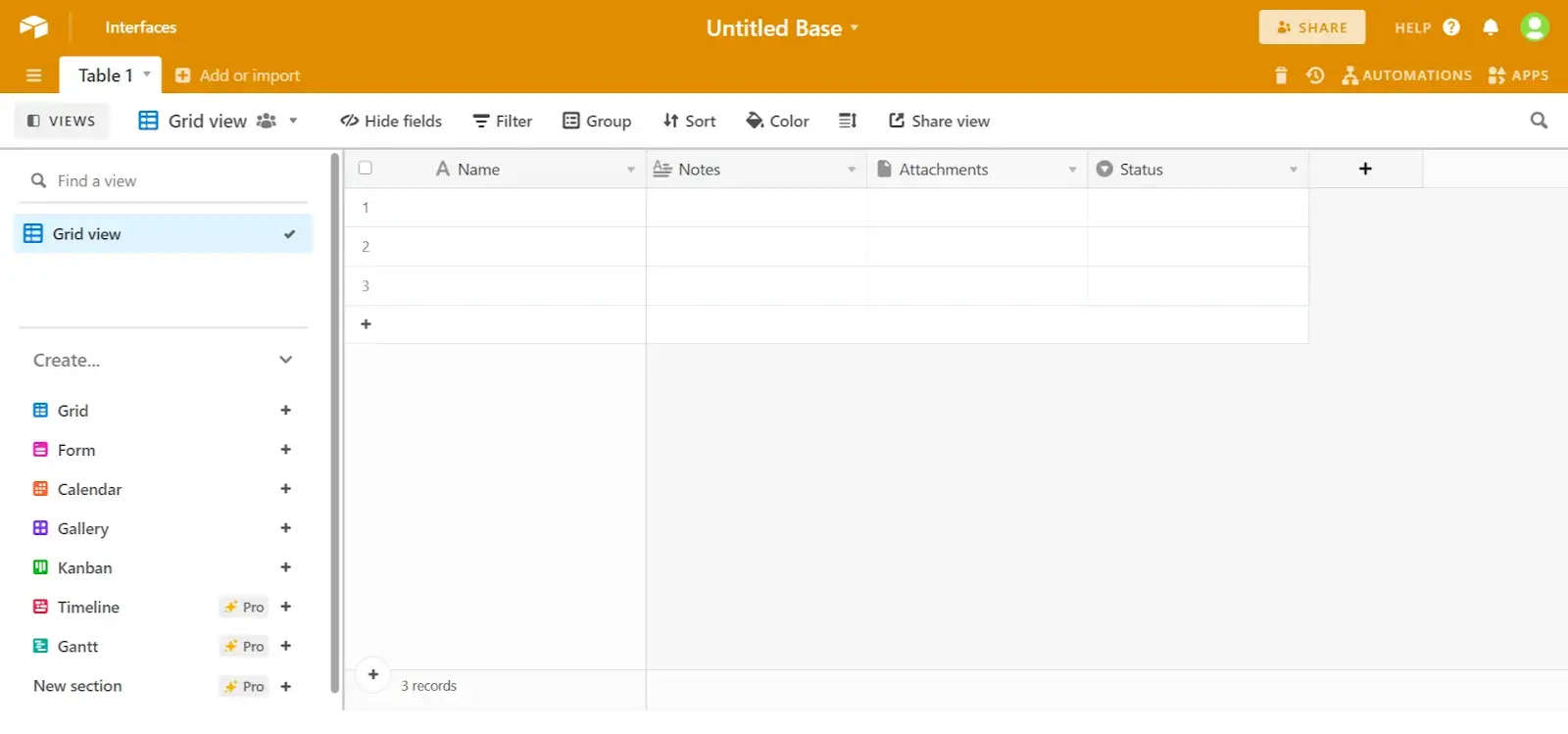
When it comes to simplicity of use, Google sheets win over Airtable. Although Airtable is not complicated compared to what it offers, it’s not as simple as Google sheets, which was designed so that every online user can create a sheet and start using it in seconds.
Google sheets serve as a no-code database for many types of data, but limits might arise when it comes to processing complicated datasets and hardcore analytics.
For example, it would be almost impossible to use Google sheets with advanced financial datasets. Because there isn’t a way to build relations or review the data efficiently rather than the usual tables.
Although anything can be saved in Google sheets, the plain rows and columns layout and limited functionality make it unsuitable for complicated datasets.

Airtable services as a relational no-code data management platform, and that becomes helpful when you have complicated datasets. It allows building connections between the data itself, and it offers colorful and interactive attributes to make the user experience easier. Furthermore, Airtable is suitable for planning projects and following up with team progress in different departments like sales or marketing.
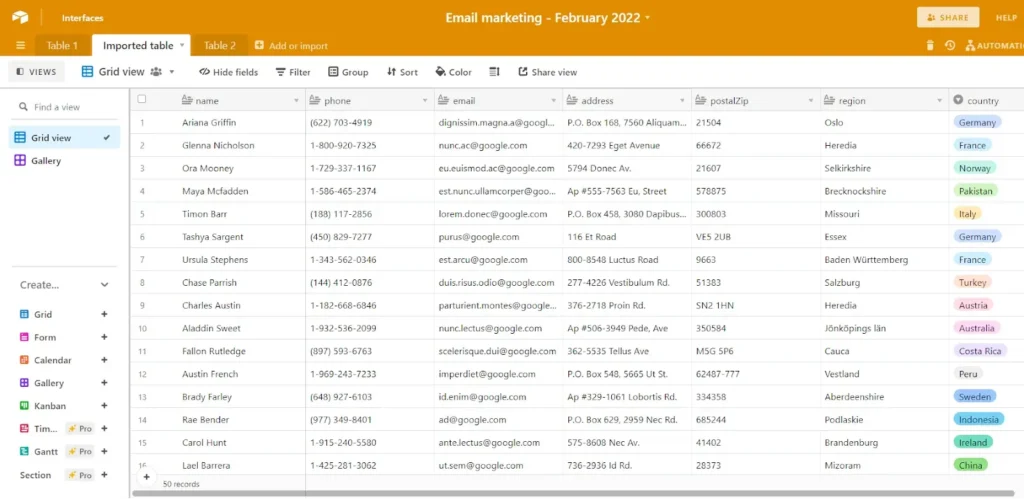
When it comes to processing complicated datasets, Airtable wins over Google sheets with its interactive interfaces and relational features. This is why Google sheets are more database centralized while Airtable is more data management centralized.

Integrate Google Sheets With 750+ Apps In 1 Click
No Learning Curve. Built For Non-techies.
Google sheets are not very compatible with mobile phones. Although you can view any sheet with your mobile phone, the small screen makes it difficult to follow the rows.
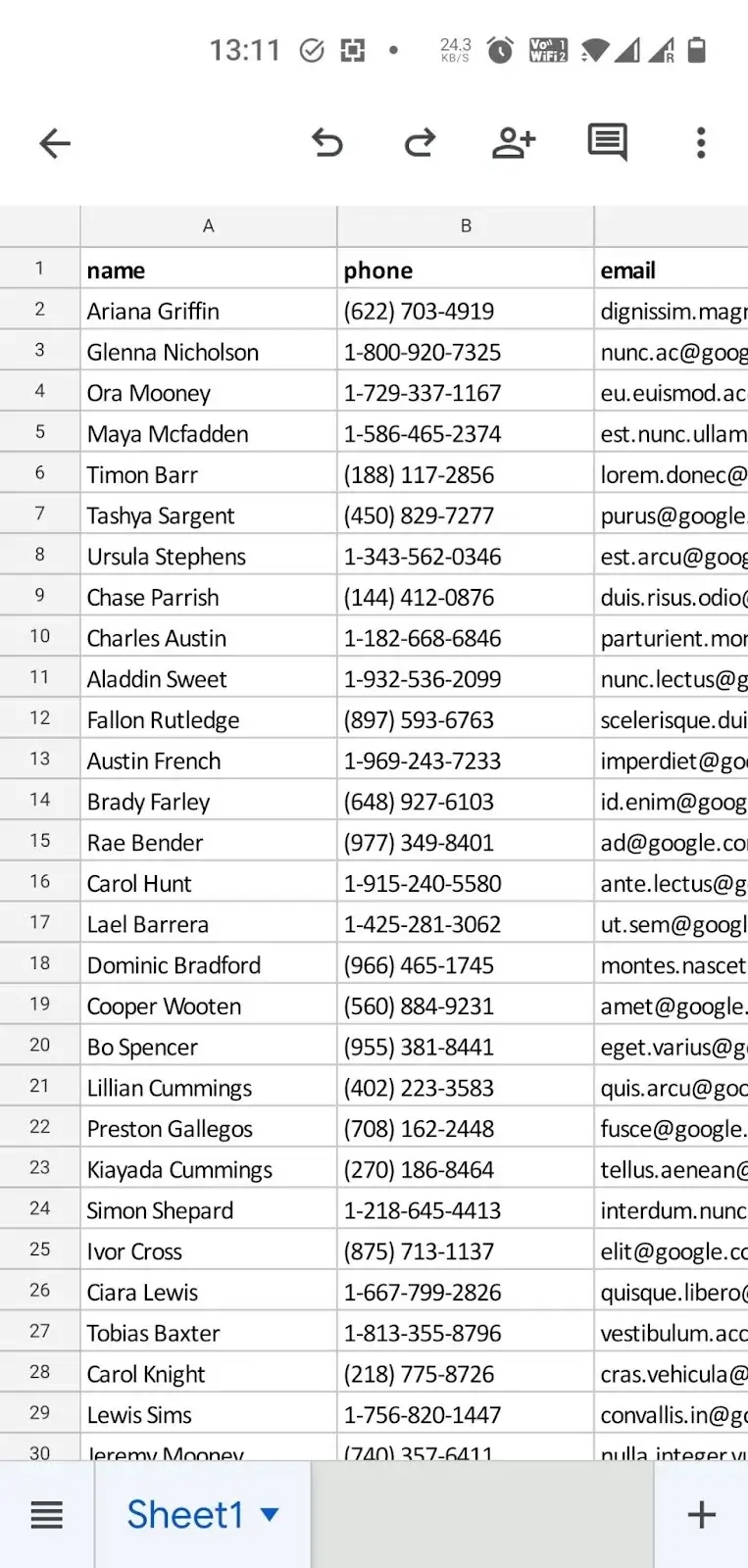
Airtable is also hard to use on mobile phones for the same reason, but it has an advantage. The ability to switch the layout from the usual table to cards using the gallery view gives a better view on mobile phones.
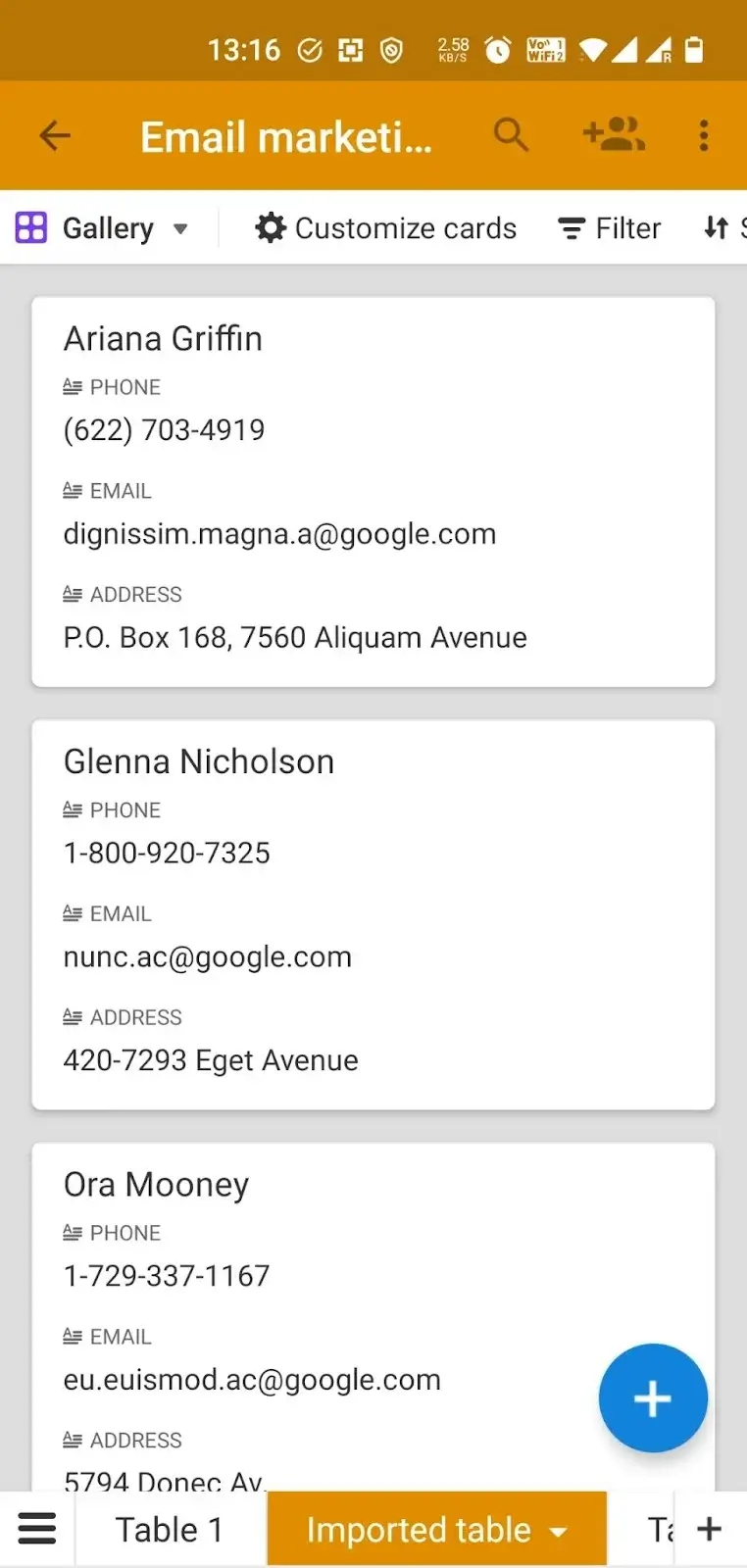
Both are not that impressive when using mobile phones, but we can say Airtable wins over Google sheets because it offers to switch the layout.
Google sheets offer straightforward collaboration features. It allows co-working on the sheets with real-time updates and fundamental access limits, which can be edit access or view access.
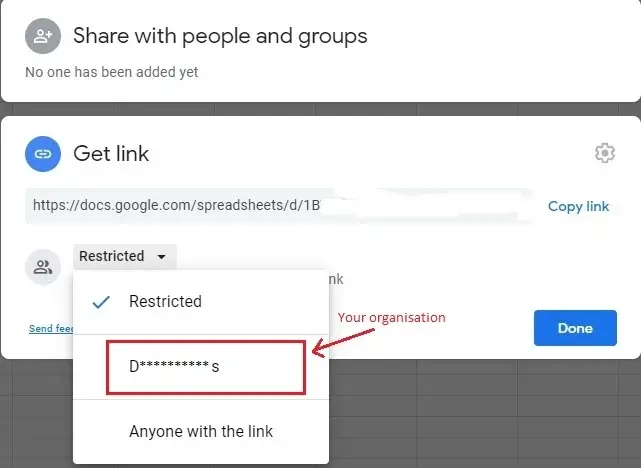
Airtable allows collaboration and real-time editing, same as Google sheets but with a more complicated system for accessing shared data.
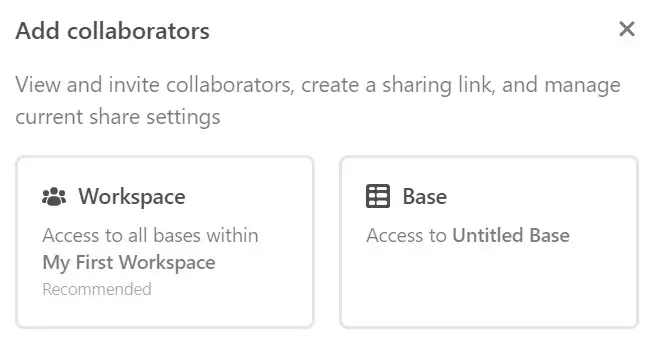
When it comes to collaboration, no one can top the other because both offer the same functionality with almost similar approaches. Both have a creator, editor, commenter, and read-only. The most important thing here is the collaborative ability and the multi-level access privileges.
Google sheets is free, and you can start creating and sharing Google sheets the moment you create a Gmail account, whether you’re using a free Gmail account or a paid G-suite account. Google sheets are free.
However, hosting your sheets will be on Google’s servers, and when your cloud drive exceeds the limit, you’ll have to pay a subscription to expand your storage. There won’t be a need for such action for personal and small business users. Medium to big companies will need to enlarge their storage over time.
All features are available for free in Google sheets. You can create as many sheets as you want, share them with your team, edit them in real-time, integrate them with other software, and much more—still, no need for any payment.
Airtable free plan has limited functionalities. Although you can create unlimited bases with a free subscription, you can’t have more than 1200 records per base. Such limits make handling real work with Airtable’s free version hard. To be more specific, the free subscription could serve personal uses or as a trial for interested users.
To benefit from Airtable as an SME or experienced individual, you’ll need to pay. The payment is not that kind of a deal –
starting with $10 per seat per month – Professional plan, and
increasing up to $20 per seat per month – Productivity plan.
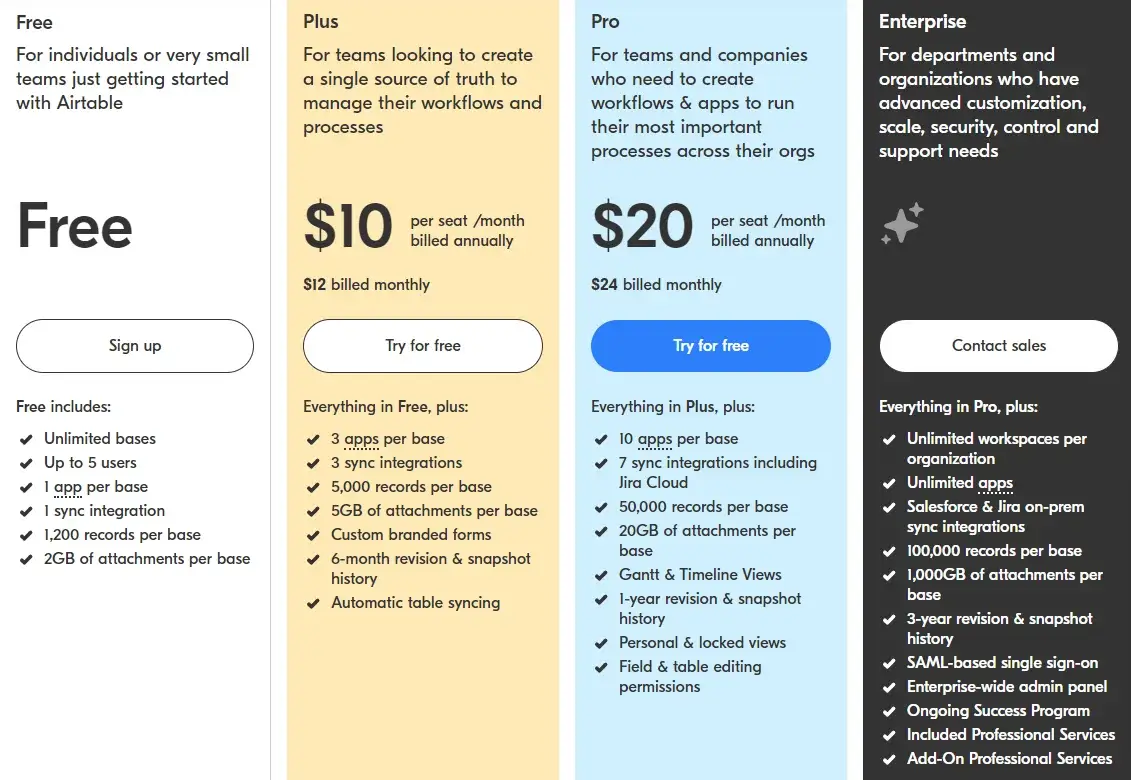
8 Million+ Ready Automations
For 750+ Apps
Many business managers from different levels don’t have a clue about integrations. Let’s quickly introduce the integration concept. When you have to use several different apps, and you need them to communicate and exchange data, that’s when you need integration.
Both these apps offer native integrations with other applications. Examples of native integrations that Google sheets have are:
Google Forms
Gmail
And for Airtable, those would be:
Asana,
Dropbox,
Google calendar, etc.
For any other applications that you wish to integrate with Google sheets or Airtable, you can use an integration platform. An integration platform will provide automation to make the output of the 1st application the second application’s input. In one way or another, it plays the role of the middle man. The main point here is the ability to do that with no-code experience.
You can consider using Integrately, which is one of the integration platforms with 8 million+ ready automations for 700+ apps. It integrates similarly with Google sheets and Airtable. Unlike Zapier, which is not that flexible with Airtable. Integrately offers lots of flexibility integrating with Airtable, making both Google sheets and Airtable almost similar in terms of their integration readability.
Some users will go with Google sheets just for being Google fanatics, and others will choose Airtable because they like the experience better. That is a little irresponsible, especially if you want to implement the no-code database for your business needs.
Choosing between Airtable and Google sheets has to do with your business case. Before you decide, try summarizing the main reasons why you want to use a no-code database. Once done, compare your points with both Airtable and Google sheets features and choose the one that serves your plan the most.
Meanwhile, if you want an interactive database for your listings with images and internal links, then consider Airtable.